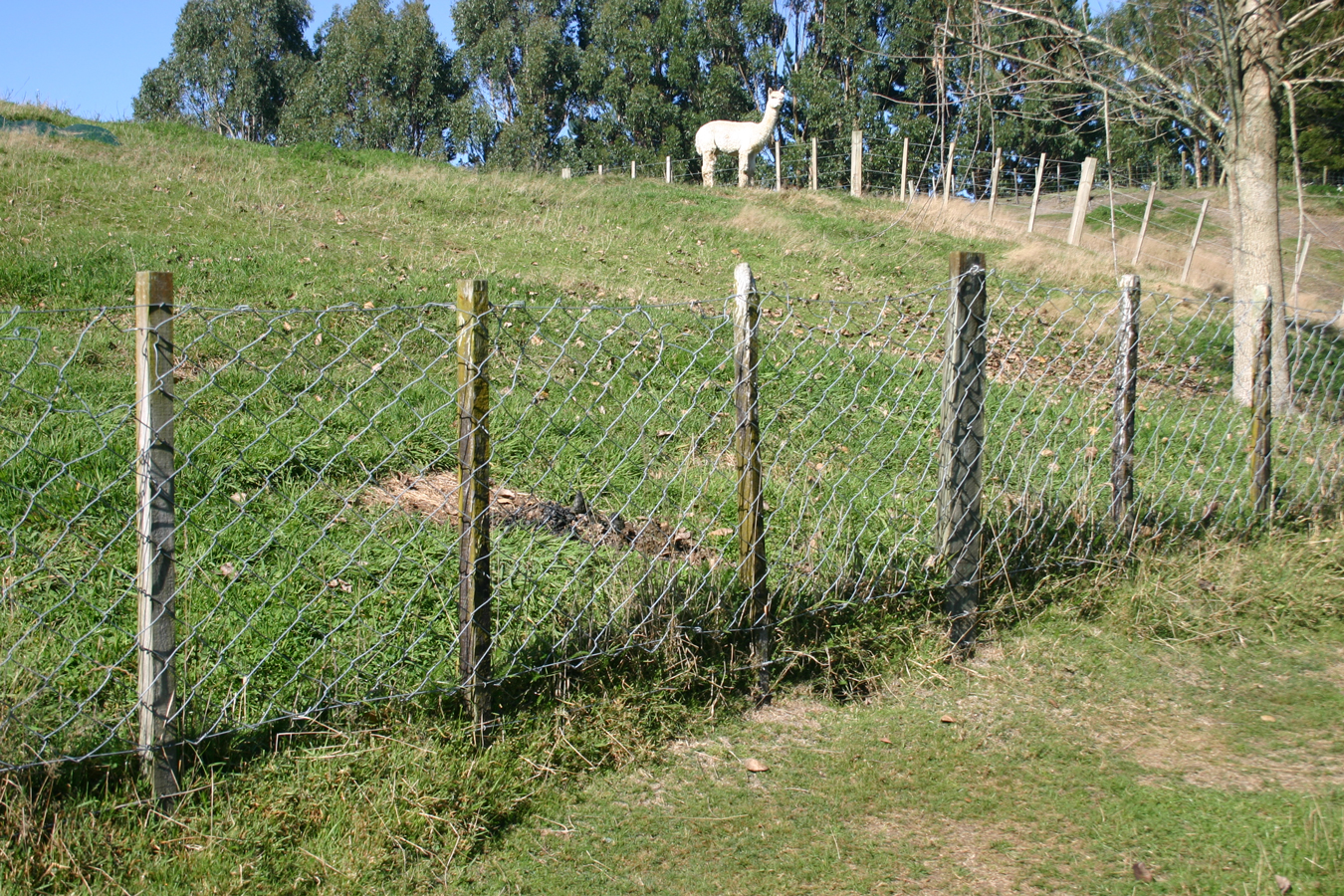Pens or Yards
It is necessary to have a catch pen or yards to enable you to carry out many of the routine tasks associated with managing your alpacas, e.g carrying out regular health checks, giving vaccinations, worming, halter training, and shearing, etc.
The height of your yards or pen should be 1.20 metres, however 1 metre can suffice on most occasions. Although most alpaca are not jumpers, some can become agitated and feel threatened when “locked up” and will try to climb or jump over the side.
It is imperative that the pen is sturdy, so that you can push the alpaca against the side if necessary to hold them still.
The size of your yards will usually be dependent on the number of alpaca that you envisage running, however, in all cases a narrow race or one narrow pen for difficult animals is a good idea. When they can’t move very much there is less chance of you being kicked.






